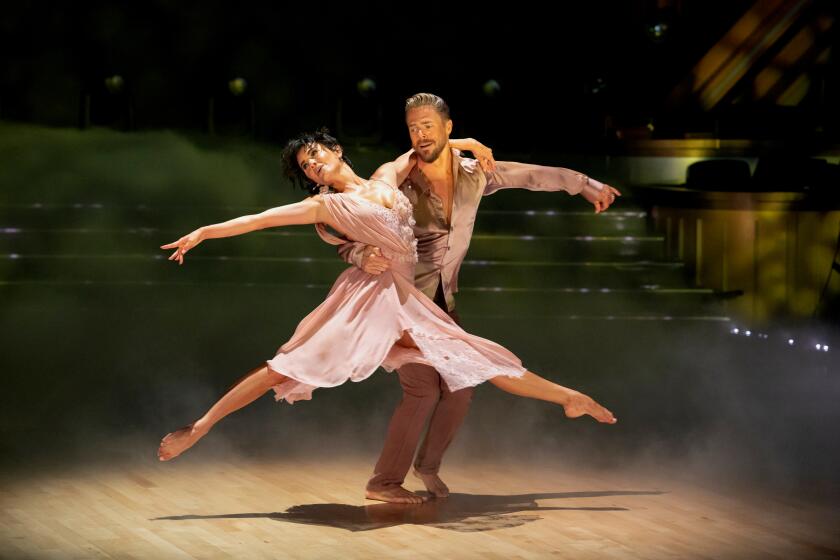Designers Take a Novel Approach to Library
SAN DIEGO â Architects have long used houses as testing grounds. Designing for themselves or open-minded clients, they can try out ideas that might be too aggressive for larger commercial projects.
San Diego has its own collection of extraordinary houses, ranging from Irving Gillâs stark modern experiments early this century to 1980s homes designed by Randy Dalrymple with cartoonish nicknames: âPig with a Purple Eye Patchâ and âSoldiers in Argyle.â
Now, only a block from the âPigâ house in red-sidewalked Burlingame, comes the âObservatory House,â the first built work from husband-and-wife team Rene Davids and Christine Killory.
Davids and Killory moved to San Diego from London in 1987 to live where they felt innovative architecture would be praised rather than chastised. With Prince Charles having appointed himself Englandâs royal architectural critic (and a very conservative one), new designs have had a tough time of it.
The architects bought their house soon after arriving in San Diego, with little idea as to how they might eventually remodel it.
The project involved the addition of an ordinary room--a library--in an extraordinary way. The new tower provides well-lighted spaces for shelves and reading.
Its purpose may be common, but its unusual appearance is causing spirited reactions the neighborhood hasnât heard since the âPigâ arrived a few years ago.
âIt just doesnât fit,â said a delivery man whose route regularly takes him past the architectsâ property on Kalmia Street near 30th. âI donât know how they got permission.â
âA lot of us are not quite sure what theyâre doing,â said Greg Rutten, who lives a half block away.
âI hate restrictions,â added Ruttenâs wife, âbut these homes should be restored in the original way.â
The architects arenât exactly dabblers. A lot of thought has gone into their design.
Davids and Killory were trained in London. They met at the Architectural Assn. school, revered among architects as the training ground for such cutting-edge 20th-Century architects as Bernard Tschumi, Richard Rogers, Zaha Hadid and Rem Koolhaas.
All except Rogers participated in the controversial show on Deconstructivist architecture earlier this year at the Museum of Modern Art in New York City.
âDeconstructivismâ is, by most accounts, an offshoot of âdeconstruction,â an approach to literary criticism. In architecture, the movement has produced a variety of writings, theoretical designs and a few buildings. Although architects will argue, what many of these buildings have in common is the way they depart from the rectilinear geometries of traditional buildings. Many of them are characterized by walls, roofs and other structural forms which slip past each other or collide at amazing angles.
Davids and Killoryâs house captures some of this energy with its well-composed exterior. Some may see a resemblance to certain expressionist paintings by artists like Piet Mondrian and Wassily Kandinsky, who used abstract arrangements of geometric forms as metaphors for contemporary life.
The house began life as a typical stucco bungalow similar to many nearby, with hardwood floors, wood crown and cove-base moldings and a layout around a central courtyard.
Because the original home is not a famous local period piece, it is not on anyoneâs historic preservation list. When the architects visited the cityâs building department to get permits, nothing was said about its architecture, Killory said. In fact, the inspector liked the project and even wished he had such a place for his book-collecting wife.
The exterior of the tower relates to the city at large.
âWe were interested in introducing urban imagery in material and formal concerns,â Killory said. She was referring to the tower, for example, which has many local precedents, including the towers of many Queen Anne Victorian homes and the California Tower in Balboa Park, visible from the roof of this pinnacle.
Killory also sees urban imagery in the materials used to render both the interior and exterior: commercial aluminum windows, two staggered-step steel staircases, a second-level bridge of steel grillwork, and stainless steel fasteners that help hold the towerâs steel frame together.
The tower has an element of ambiguity. Tiny windows which punctuate the street side throw off your sense of scale. How many stories are inside?
There are two levels of books, plus two outdoor observation decks. On one corner of the tower is a tiny office, a place for reading, writing letters, thinking, people watching--a cozy, private escape hatch.
During design, Davids and Killory considered a context including the immediate neighborhood but extending far beyond. A slit skylight is positioned to frame the North Star.
In 1988, before the project had even been built, the local American Institute of Architects chapter awarded Davids and Killory a Citation of Recognition for the design.
Despite some heated reactions among neighbors, many are intrigued, even impressed. The architects tell of a steady stream of gawkers on weekends.
âOh, this is really different,â said Killory, imitating a Valley Girl type.
âOr people come by and they do this,â he continued, giving the thumbs-up sign.
An elderly Chinese man told the architects the tower reminds him of the towers in his home land.
Today, the âPigâ house seems accepted in its neighborhood. âPeople are used to it,â Rutten said.
In the same way, people are already warming up to the âObservatory House.â
âI think itâs great,â said Jean Johnson, visiting her mother-in-law just down the street. âItâs just a bunch of old fogies who donât like it.â
More to Read
The biggest entertainment stories
Get our big stories about Hollywood, film, television, music, arts, culture and more right in your inbox as soon as they publish.
You may occasionally receive promotional content from the Los Angeles Times.










